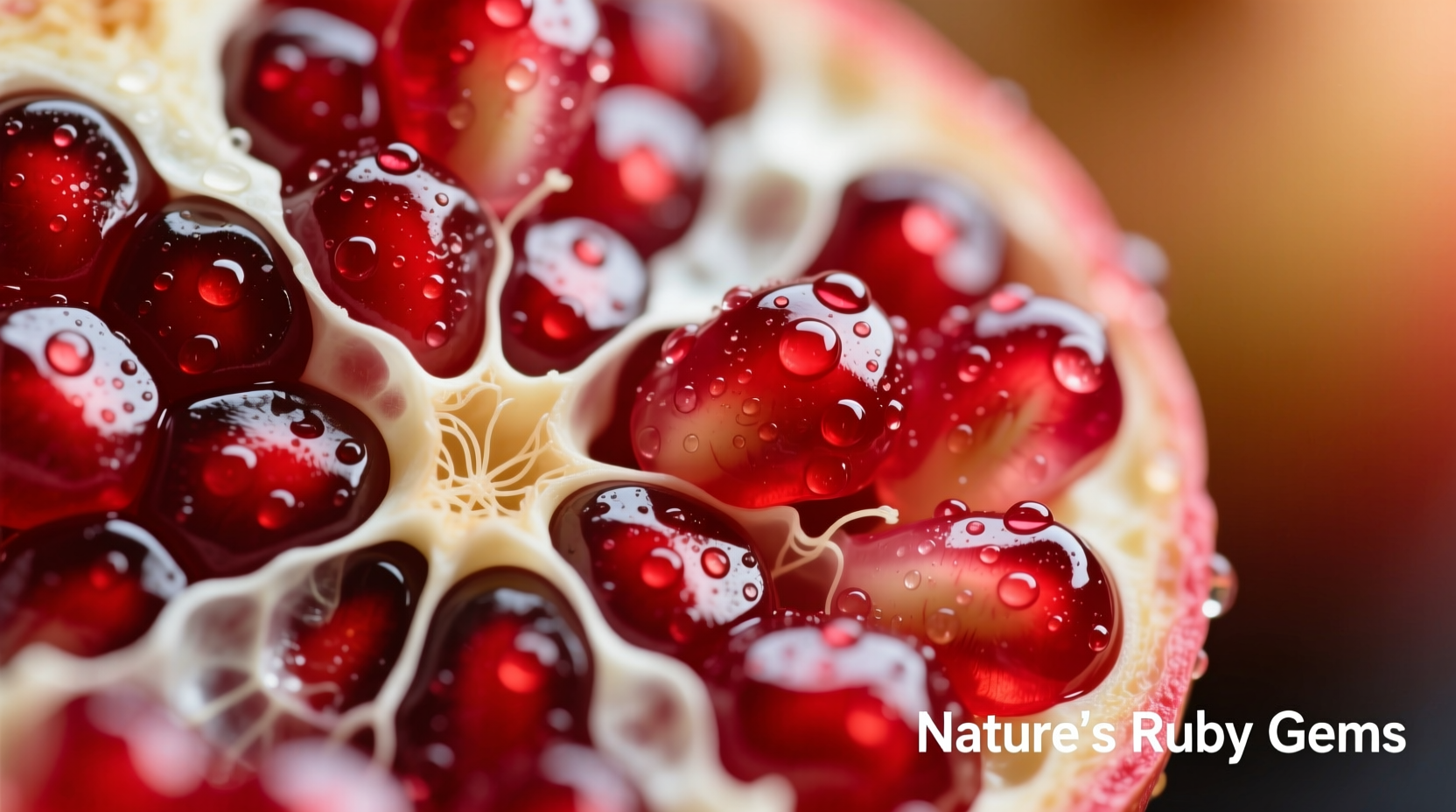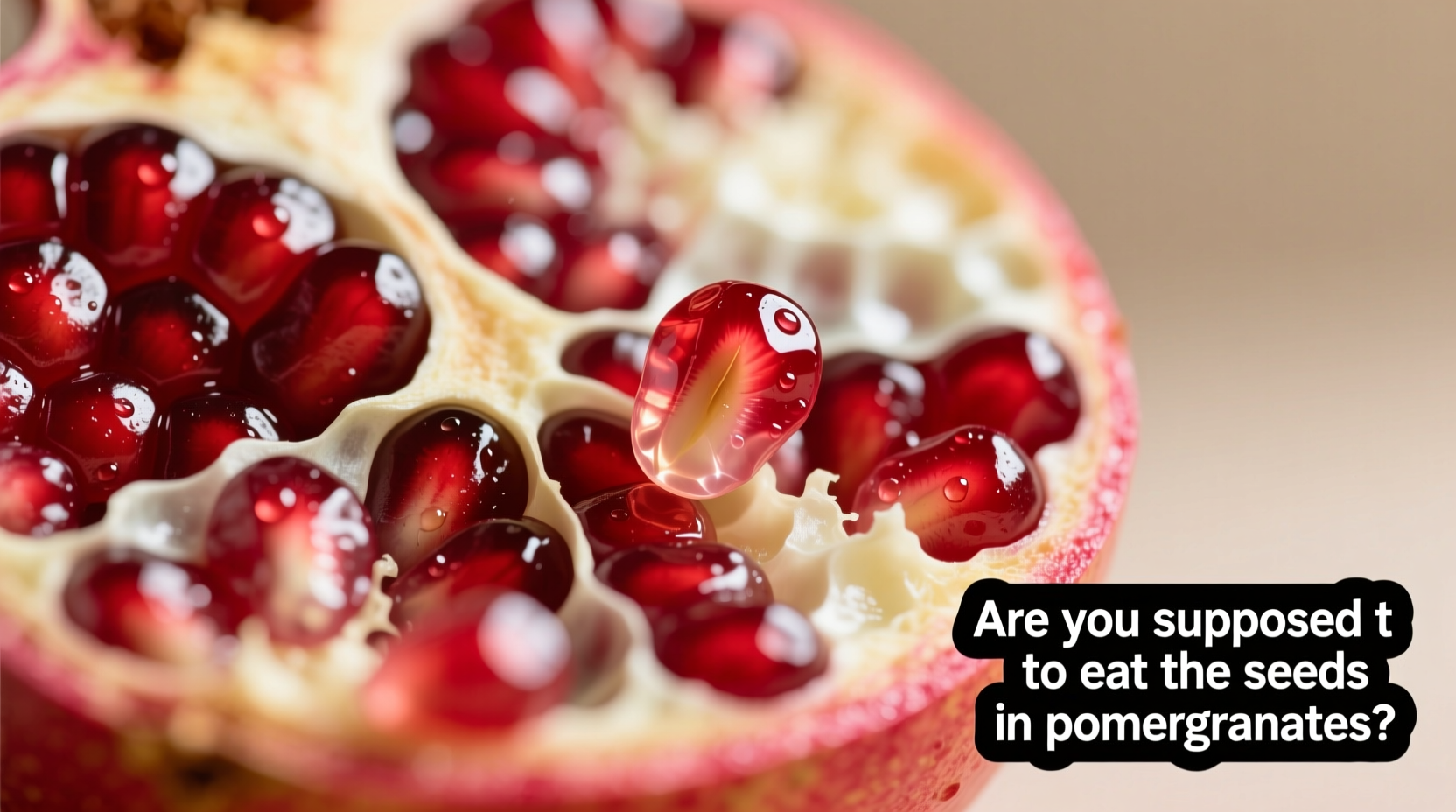Understanding Pomegranate Anatomy: What You're Actually Eating
When you cut open a pomegranate, you'll find hundreds of jewel-like structures called arils. Each aril consists of two parts:
- The translucent, juice-filled sac (the part most people think of as the "seed")
- The small, crunchy seed nestled inside that sac
Contrary to popular belief, both components are edible and nutritious. The white membrane and thick outer rind are the only parts you should avoid eating due to their bitter taste and tough texture.
| Pomegranate Component | Edible? | Flavor Profile | Nutritional Value |
|---|---|---|---|
| Aril (juice sac + seed) | Yes | Sweet-tart, refreshing | High in antioxidants, vitamin C, fiber |
| Inner seed (within aril) | Yes | Mildly nutty, crunchy | Rich in polyphenols, healthy fats |
| White pith/membrane | No | Bitter, astringent | Low nutritional value |
| Outer rind | No | Extremely bitter | Used in traditional medicine (not for direct consumption) |
Why You Should Eat the Entire Aril (Including the Seed)
Many people make the mistake of spitting out the seeds after sucking the juice, missing out on significant nutritional benefits. According to research published in the Journal of Agricultural and Food Chemistry, the seeds contain up to three times more polyphenols than the juice alone. These compounds are powerful antioxidants that help combat inflammation and oxidative stress.
The USDA National Nutrient Database confirms that a single cup (174g) of pomegranate arils provides:
- 234mg of potassium (7% of daily value)
- 28% of your daily vitamin C needs
- 11g of dietary fiber (44% of daily value)
- Substantial amounts of vitamin K, folate, and copper

Practical Guide to Eating Pomegranates Properly
Learning how to eat pomegranates efficiently ensures you get every nutritious bite without the mess. Here's the chef-approved method:
- Cut correctly: Score the pomegranate horizontally around the middle without cutting into the seeds
- Submerge in water: Separate the halves underwater to prevent juice splatter
- Release arils: Gently push seeds out from the membrane while submerged
- Drain: The arils will sink while membrane floats for easy separation
- Enjoy whole: Consume both the juicy sac and crunchy seed together
Nutritional Benefits Backed by Science
Pomegranate seeds aren't just edible—they're exceptionally beneficial for your health. A comprehensive review in Nutrients journal (2021) analyzed over 50 clinical studies showing that regular pomegranate consumption:
- Supports cardiovascular health by reducing blood pressure
- May slow prostate cancer progression
- Improves exercise performance and recovery
- Enhances memory function in older adults
- Promotes gut health through prebiotic fiber
The National Center for Complementary and Integrative Health notes that pomegranates contain unique compounds called punicalagins that have three times the antioxidant activity of red wine or green tea.
Common Misconceptions About Pomegranate Seeds
Let's clear up some widespread myths that might be preventing you from enjoying this superfood properly:
Myth: Pomegranate seeds are hard to digest
Reality: While the seeds are fibrous, they're completely digestible for most people. The fiber actually aids digestion and promotes gut health. Those with specific digestive conditions should consult their doctor, but for the general population, whole arils pose no issues.
Myth: You should only drink the juice, not eat the seeds
Reality: Commercial pomegranate juice often lacks the fiber and some nutrients found in the whole aril. As noted by the USDA Food Composition Laboratory, juicing removes beneficial insoluble fiber and reduces polyphenol content.
Creative Ways to Enjoy Pomegranate Seeds
Don't limit yourself to eating pomegranates straight from the fruit. Try these chef-recommended applications:
- Breakfast boost: Sprinkle over Greek yogurt with honey and nuts
- Salad accent: Toss with mixed greens, goat cheese, and walnuts
- Protein pairing: Add to quinoa bowls or grain salads
- Cocktail garnish: Float in sparkling water or champagne
- Baking inclusion: Fold into muffin or scone batter
Storage Tips for Maximum Freshness
Proper storage extends the shelf life of your pomegranate harvest:
- Whole fruit: Store at room temperature for up to 1 week or refrigerate for 1-2 months
- Separated arils: Keep in airtight container in refrigerator for 5 days
- Long-term: Freeze arils in single layer then transfer to freezer bags (up to 12 months)
When selecting pomegranates, choose fruits that feel heavy for their size with firm, deeply colored skin. Avoid those with cracks or soft spots which indicate overripeness.
How Much Should You Eat Daily?
While pomegranate seeds are healthy, moderation is key. Registered dietitians recommend:
- 1/2 to 1 cup of arils (87-174g) per day for most adults
- This provides about 72-144 calories and 16-32g of natural sugars
- Those monitoring sugar intake should limit to 1/2 cup daily
The American Heart Association considers pomegranates an excellent addition to heart-healthy diets due to their high antioxidant content and low sodium profile.











 浙公网安备
33010002000092号
浙公网安备
33010002000092号 浙B2-20120091-4
浙B2-20120091-4